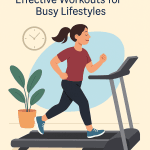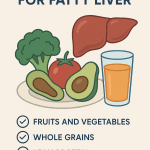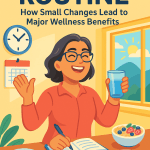In an ever-changing world where uncertainty, pressure, and emotional fatigue have become daily companions, mental health is no longer a luxury—it’s a necessity. Just like we train our bodies to get stronger, our minds too require consistent care and strategic training to bounce back from setbacks, stay calm under pressure, and navigate stress with grace.
This ability to adapt and recover is known as emotional resilience—and the great news is that it’s not a trait you’re born with or without. It’s a skill that can be developed, strengthened, and sustained with intentional habits and mindset shifts.
In this in-depth guide, we’ll explore proven strategies to build emotional resilience and protect your mental health—giving you the tools to thrive, not just survive, in your personal and professional life.
What Is Emotional Resilience and Why Does It Matter?
Emotional resilience is the capacity to cope with stress, adversity, trauma, or tragedy while maintaining—or quickly regaining—a sense of control and psychological well-being.
People with high resilience don’t avoid difficulties; they face them head-on with:
- A flexible mindset
- Constructive coping strategies
- Self-awareness and emotional regulation
- A strong support system
- Optimism and adaptability
Studies show that emotional resilience is associated with:
- Lower levels of anxiety and depression
- Better physical health
- Stronger relationships
- Higher workplace productivity
- Greater life satisfaction
It’s your mental immune system. And like any system, it works best when it’s nurtured daily.
The Pillars of Emotional Resilience
To build resilience, think in terms of core pillars. These foundational areas support your mental health and emotional balance when life gets turbulent.
Self-Awareness: Know Yourself to Heal Yourself
Self-awareness is the first step to emotional strength. It involves understanding:
- Your emotional triggers
- How you typically react to stress
- What drains or restores your energy
- Your thought patterns and inner voice
Practices that build self-awareness:
- Journaling: Reflect daily on your thoughts, feelings, and reactions
- Mindful check-ins: Pause to ask, “What am I feeling right now?”
- Emotional labeling: Name your emotions (“I feel anxious,” “I feel overwhelmed”)
The more you understand your inner world, the more power you have to manage it.
Emotional Regulation: Calm Within Chaos
Emotional regulation is the ability to stay grounded, even when emotions surge. It doesn’t mean ignoring feelings—it means creating space between stimulus and response.
Techniques to develop this skill:
- Box breathing (inhale 4, hold 4, exhale 4, hold 4) to reduce cortisol
- Cognitive reframing to see setbacks as learning opportunities
- Progressive muscle relaxation to release stored tension
- Grounding techniques like the 5-4-3-2-1 method (five things you see, four you feel, etc.)
Over time, these practices rewire your brain to respond with calm rather than panic.
Cognitive Flexibility: Train Your Mind to Pivot
Rigid thinking often leads to overwhelm. Cognitive flexibility is the ability to adapt your thoughts, beliefs, and perspectives when faced with new information or challenges.
Build this by:
- Challenging “black-and-white” thinking (e.g., “This always happens to me”)
- Asking questions like “What else could be true?” or “How would someone I admire view this?”
- Practicing empathy—seeing things from another’s perspective
- Accepting ambiguity and uncertainty without spiraling
Flexible thinking opens doors to creativity, problem-solving, and resilience.
Social Support: The Power of Human Connection
Even the strongest minds need support. Human beings are wired for connection, and relationships are a buffer against stress and trauma.
Ways to strengthen your support system:
- Cultivate authentic friendships based on mutual trust and care
- Set boundaries with toxic or draining people
- Join supportive communities, clubs, or online groups
- Seek professional help when needed—therapy is strength, not weakness
Regular connection—whether through conversation, shared laughter, or silent presence—builds a safe emotional foundation.
Purpose and Meaning: A North Star in Dark Times
People with a strong sense of purpose are more resilient to stress, better able to cope with pain, and more likely to take care of their health.
Find purpose through:
- Setting personal values (what matters most to you?)
- Engaging in volunteering or service
- Doing work that feels aligned with your passions
- Journaling about what gives your life meaning
Even during struggle, having a purpose reminds you: this challenge isn’t the whole story.
Everyday Strategies to Strengthen Mental Resilience
Building emotional resilience isn’t about doing more—it’s about doing intentionally. Here’s how you can strengthen your mental health through daily actions.
Create a Morning Routine That Grounds You
Mornings set the emotional tone for the day. Choose habits that nourish your nervous system:
- Breathwork or stretching
- Intentional silence or prayer
- Gratitude journaling
- Setting a daily intention (“Today, I choose calm.”)
- Drinking water and getting natural sunlight
Start your day with control, clarity, and care.
Move Your Body to Strengthen Your Mind
Exercise isn’t just for muscles—it’s for mental resilience too. Physical movement:
- Lowers anxiety and depression
- Boosts endorphins and dopamine
- Enhances cognitive function
- Improves sleep and stress regulation
Even just 20 minutes of walking or yoga daily can drastically improve your emotional resilience over time.
Set Micro-Boundaries for Your Mental Health
Protecting your mental space is essential. Boundaries can be small but powerful:
- Silence notifications for focused work
- Say “no” to unnecessary commitments
- Schedule tech-free hours
- Create a calming evening ritual
- Limit exposure to negative news or toxic social media
Resilience flourishes when your mental garden is free from weeds.
Practice Gratitude and Positive Focus
Gratitude is scientifically proven to increase happiness and reduce depression. It also rewires your brain to focus on what’s going well, creating emotional stability.
Gratitude practices include:
- A daily gratitude journal (3 things you’re thankful for)
- Sharing appreciation with others
- Reflecting on lessons learned from challenges
When you train your brain to see the good, you automatically increase your capacity for joy—even in difficulty.
Sleep: The Silent Superpower of Emotional Strength
Sleep is where emotional recovery happens. During deep sleep, your brain processes emotional experiences, resets hormones, and integrates memory.
To sleep better:
- Maintain a consistent bedtime
- Avoid screens an hour before sleeping
- Make your bedroom cool and dark
- Use relaxation techniques like meditation or calming music
Sleep isn’t optional—it’s mental resilience fuel.
Resilience Through Adversity: What Real Life Teaches Us
True resilience doesn’t mean you never struggle—it means you struggle with support, tools, and self-compassion.
Remember:
- It’s okay to not be okay
- Asking for help is a sign of intelligence
- Growth often comes from discomfort
- Setbacks are setups for transformation
Every challenge you face becomes training for future strength. When you use your tools and keep going, you become someone even stronger on the other side.
Conclusion: Resilience Is a Daily Practice, Not a Destination
Building emotional resilience is not about being invincible. It’s about becoming more adaptable, more self-aware, and more connected to your strength.
You don’t need to overhaul your life overnight. Start small:
- Pause and breathe
- Journal your thoughts
- Go for a walk
- Express gratitude
- Talk to someone you trust
The more you practice, the more your mind learns to bend without breaking. You’ll begin to respond to stress with calm, see challenges as growth, and approach life with quiet confidence.
Because resilience isn’t something you wait for. It’s something you build, every day.
FAQs
Mental toughness often emphasizes endurance and grit, while emotional resilience is about adapting, recovering, and responding to stress with emotional intelligence and flexibility.
Yes. Like a muscle, resilience can be strengthened through daily habits, mindset shifts, and supportive relationships.
Focus on boundaries, time management, purpose in tasks, and supportive communication. Small routines like breaks and breathwork help, too.
Absolutely. Therapists provide tools, support, and insights that accelerate emotional growth and help you manage stress more effectively.
Results vary, but with daily practice, many people notice changes in how they handle stress and emotion within a few weeks.
Yes. Resilience practices buffer you against emotional depletion, help you recover quicker, and create space for rest and renewal.








Post a comment